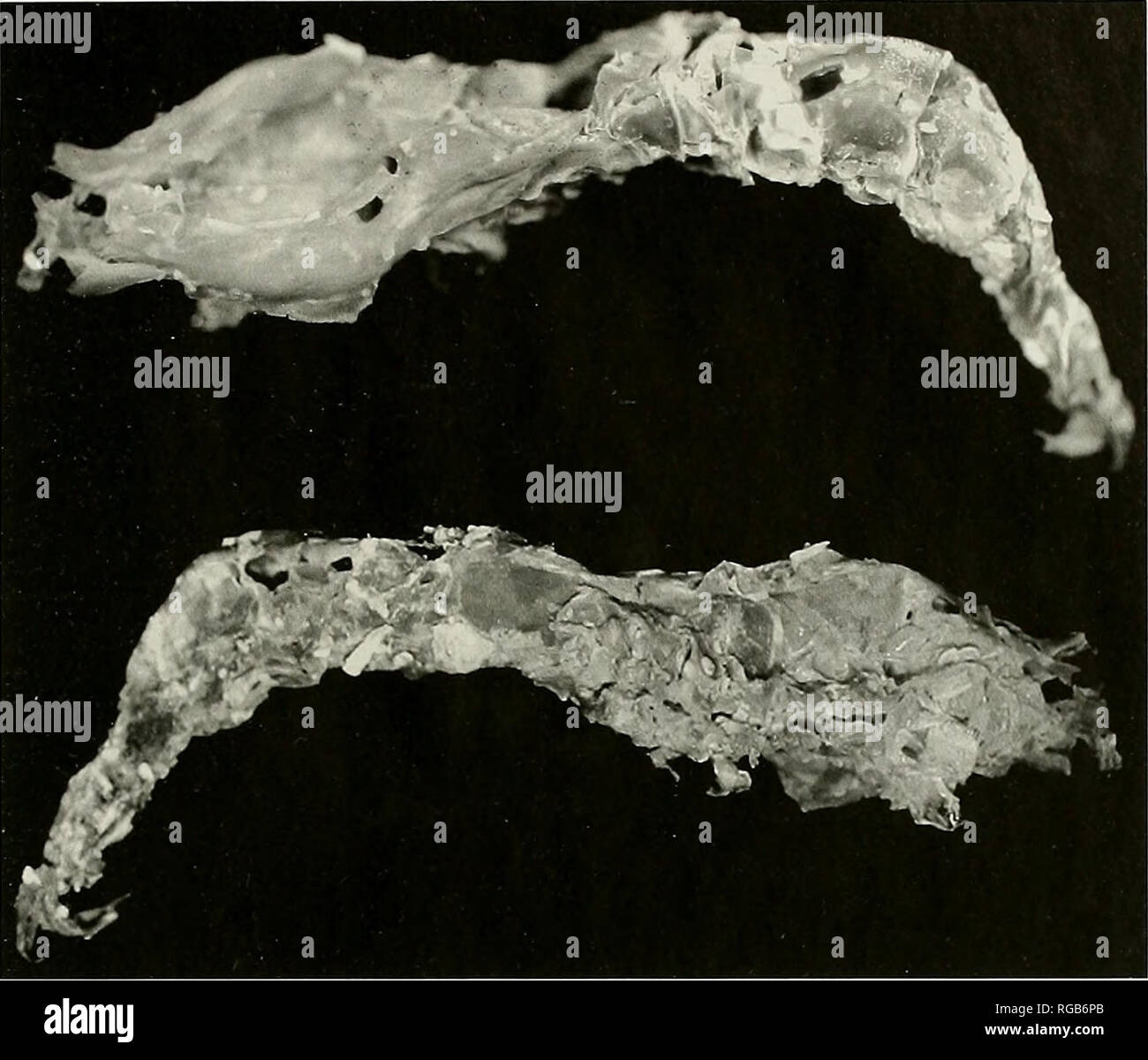. The Bulletin of zoological nomenclature. Animals. Bulletin of Zoological Nomenclature 64(3) September 2007 157. Fig. 1. Heterocarpus gibbosus Bate, 1888 - Holotype (NHM 1888.22) show that there is no doubt that H. tricarinatus and '//. gibbosus' are different taxa. The most obvious and reliable character is the form of the lateral rostral carinae of H. tricarinatus - being sharp over the entire length of the rostrum, whereas in the two species now recognised under '//. gibbosus' the carinae are broadly rounded ridges anterior to the eyes. Both Chace (1985) and Crosnier (1988) concur with reg

Image details
Contributor:
Book Worm / Alamy Stock PhotoImage ID:
RGB6PBFile size:
7.2 MB (252.1 KB Compressed download)Releases:
Model - no | Property - noDo I need a release?Dimensions:
1711 x 1461 px | 29 x 24.7 cm | 11.4 x 9.7 inches | 150dpiMore information:
This image is a public domain image, which means either that copyright has expired in the image or the copyright holder has waived their copyright. Alamy charges you a fee for access to the high resolution copy of the image.
This image could have imperfections as it’s either historical or reportage.
. The Bulletin of zoological nomenclature. Animals. Bulletin of Zoological Nomenclature 64(3) September 2007 157. Fig. 1. Heterocarpus gibbosus Bate, 1888 - Holotype (NHM 1888.22) show that there is no doubt that H. tricarinatus and '//. gibbosus' are different taxa. The most obvious and reliable character is the form of the lateral rostral carinae of H. tricarinatus - being sharp over the entire length of the rostrum, whereas in the two species now recognised under '//. gibbosus' the carinae are broadly rounded ridges anterior to the eyes. Both Chace (1985) and Crosnier (1988) concur with regard to this character, and the present material confirms this. Both H. gibbosus and H. tricarinatus occur sympatrically in the Philippines (Chace, 1985; present material), although their depth preferences appear to be different. With the exception of the holotype, all specimens of H. gibbosus have been reported from depths ranging from 231 to 888 m (present data; Chace, 1985; Chan & Yu, 1987). Considering the depth from which the holotype of//, gibbosus was collected (1280 m), it is also possible that the real //. gibbosus is not what is today defined as the species (with the longer third maxilliped exopod) or the new one with the shorter third maxilliped exopod, but represents a completely different taxon which has not been recollected since Bate's (1888) time. This we will never know, even if we ever get such material, as the holotype of H. gibbosus is a juvenile and its condition is very poor. Unless this matter can be resolved, it is not possible to establish a stable taxonomy for these prawns. 5. As discussed in para. 1, what is now called H. gibbosus is actually a composite of two distinct species, both of which occur sympatrically in the Philippines, with. Please note that these images are extracted from scanned page images that may have been digitally enhanced for readability - coloration and appearance of these illustrations may not perfectly resemble the original